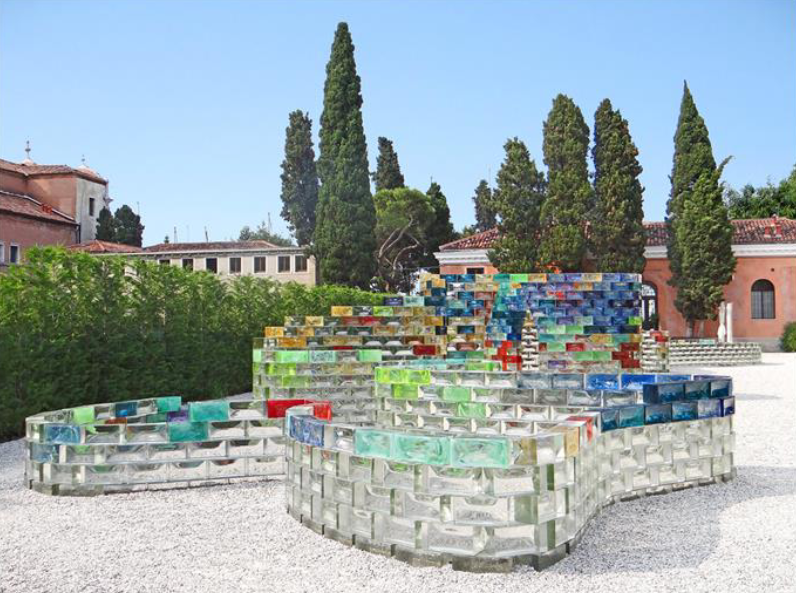Structural Design Optimization of Cast Glass Artwork via a Digital Design Solution

Abstract
Cast glass represents a captivating material for artistic expression and innovative façade elements. However, the allure of cast glass comes with its own set of challenges. One of the foremost difficulties lies in achieving secure and durable bonds between individual glass components. Unlike other materials, the smoothness of glass surface requires specialized techniques and materials to maintain
both the structural integrity and aesthetic cohesion. Furthermore, the brittle nature of glass demands that the movements of the structure be absorbed by the bonding material to mitigate the risk of stress concentrations on the glass. In this context, Pae White’s sculpture, “Qwalala”, stands as a testament to both the possibilities and challenges in glass art. “Qwalala” pays tribute to the “Gualala” river depicting its meandering course through northern California. This glass sculpture represents a curving glass wall (0.7m to 2.5m
tall) extending over 78 m and contained within a 36m x 10.3m bounding area. The wall is comprised of over 1500 cast glass bricks with 26 different colors, meticulously crafted by Italian artisans and bonded together using only Structural Silicone. Originally, the sculpture was commissioned for the Venice Art Biennale in 2017 and was exhibited at the island of San Giorgio Maggiore in Venice. However,
in 2023, the “Qwalala” found a new permanent home at the Claremont Mckenna Campus in Claremont, California. The change in location prompted a careful reevaluation of the design as the loading conditions on the wall have changed due to the increase of seismic risk in Claremont. Additionally, the client required minimizing the Silicone bonding area to maximize the transmission of light between the bricks. To meet these requirements, a more detailed analysis of the silicone patches between the bricks has to be conducted. The irregular unwinding path of the wall further complicates the task as it results in non-uniform overlapping patches between the glass bricks where the bonding material can be deposited. In this paper, we describe a parametric design workflow combining Grasshopper and the Strand7 API, capable of capturing the geometry of each overlapping path and allowing a more accurate modelling of the silicone. This resulted in a 40% reduction in the total Silicone bonding area in the wall compared to the previous installation in Venice, despite the more demanding new loading conditions imposed on the “Qwalala” glass wall.
Published
Issue
Section
Cast Glass
License
Copyright (c) 2024 Omar Aloui, Minxi Bao

This work is licensed under a Creative Commons Attribution 4.0 International License.



